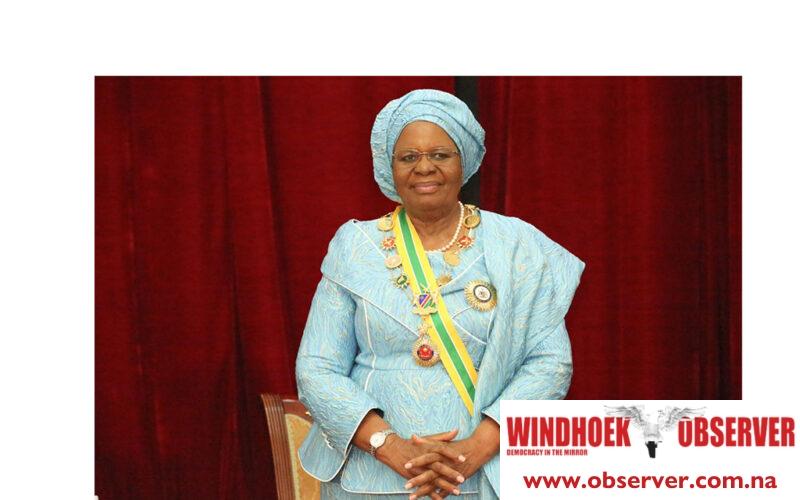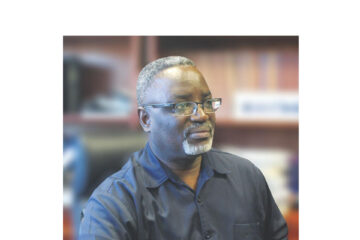Lazarus Jacobs
In his farewell speech at the inauguration of President Netumbo Nandi-Ndaitwah, outgoing President Nangolo Mbumba reflected on Namibia’s long journey:
“It has been a long journey filled with trials and tribulations, but just as our struggle for independence… has paid dividends, likewise the struggle for gender justice, spearheaded by the brave women of Namibia and their allies across the international community.”
Shortly after, President Nandi-Ndaitwah made history as Namibia’s first female head of state. Recognizing the significance of this moment, she appointed Lucia Witbooi as the nation’s first female vice president—making Namibia the only country in the world with both a female president and vice president. In another groundbreaking achievement, Saarah Kuugongelwa-Amadhila was sworn in as Namibia’s first female Speaker of the National Assembly. Additionally, Nandi-Ndaitwah’s cabinet consists of 14 ministers, eight of whom are women, making Namibia arguably the only country with a predominantly female and youthful cabinet.
Over 35 years, our country has experienced the peaceful transfer of power among five presidents, all in accordance with the Namibian Constitution. Given this historic achievement, how can Namibia capitalize on this moment to position its brand internationally? This is an unparalleled opportunity to shape a compelling narrative that showcases our nation’s progress. How do we ensure that Brand Namibia reflects these remarkable strides rather than outdated misconceptions?
We certainly remember the embarrassment when former U.S. President Donald Trump mispronounced our nation’s name as “Nambia” in 2017 or his derogatory remarks about African countries in 2018. Incidents like these underscore the need for Namibia to take control of its image on the global stage.
The Evolution of Brand Namibia
Brand Namibia thrived in the first five years post-independence, gaining international recognition for its *world-class constitution* and the peace fostered by the ruling party’s policy of national reconciliation. However, over time, our identity became diluted, and Namibia—like many African nations—was often reduced to generic stereotypes. To strengthen our brand, we must proactively shape a narrative that differentiates us from the rest of the continent.
The challenge is not unique to Namibia. A study by Brand Africa, an organization founded by Thebe Ikalafeng—one of the continent’s foremost brand strategists—revealed that 80% of the top 100 admired brands in Africa are non-African. This highlights a pressing issue: Africans need to build and champion their own brands, both commercially and as nations.
Why Brand Namibia Matters
A country’s brand is defined by global perception—what the world thinks of us matters. Governments must be deliberate in crafting a national identity that aligns with both domestic aspirations and international positioning. A strong national brand facilitates export growth, investment attraction, tourism, cultural exchange, and talent retention while fostering national pride.
For Namibia to thrive, we must embrace a distinct identity beyond our breathtaking landscapes—beyond the dunes of Sossusvlei and the wildlife of Etosha. In her inaugural address, President Nandi-Ndaitwah emphasized that it won’t be “business as usual.” Our national brand strategy must integrate culture, people, products, and tourism into a cohesive and long-term vision. Leadership and national buy-in are critical to ensuring that Namibians themselves become the primary champions of Brand Namibia.
Telling Our Story to the World
One of the biggest challenges for emerging nations like ours is effectively communicating our story to an often uninformed audience. Namibia is diverse, with varying levels of development and education. This complexity demands a clear and consistent message that resonates across different demographics, both locally and internationally.
Rebranding Namibia is no easy feat, but it is not insurmountable. We can draw lessons from countries like the Netherlands and New Zealand, which successfully reshaped their global images through strategic, policy-driven branding rather than relying solely on advertising. Their success was the result of deliberate government action, integrating national branding into policy and long-term strategic planning.
Seizing the Moment
As Namibia looks ahead, we must recognize the significance of our past while shaping a future-driven narrative. Our national identity must be clearly defined and effectively communicated—both within our borders and beyond. Namibians must rally behind our brand to achieve genuine global recognition and respect.
It has taken Namibia a long time to reach this point, and our achievements should not only be celebrated but leveraged to build a powerful national brand. By doing so, we can position Namibia as a destination of choice for tourism, investment, and global partnerships.
The time to reimagine Brand Namibia is now. By embracing our milestones and crafting a unified, authentic story, we can elevate our reputation, foster national pride, and redefine how the world perceives us. As President Nandi-Ndaitwah declared, it should be business unusual.
Lazarus Jacobs is a Director at Paragon Investment Holdings, TBWA/Paragon (Media and Advertising), and a member of the Brand Africa Council.




